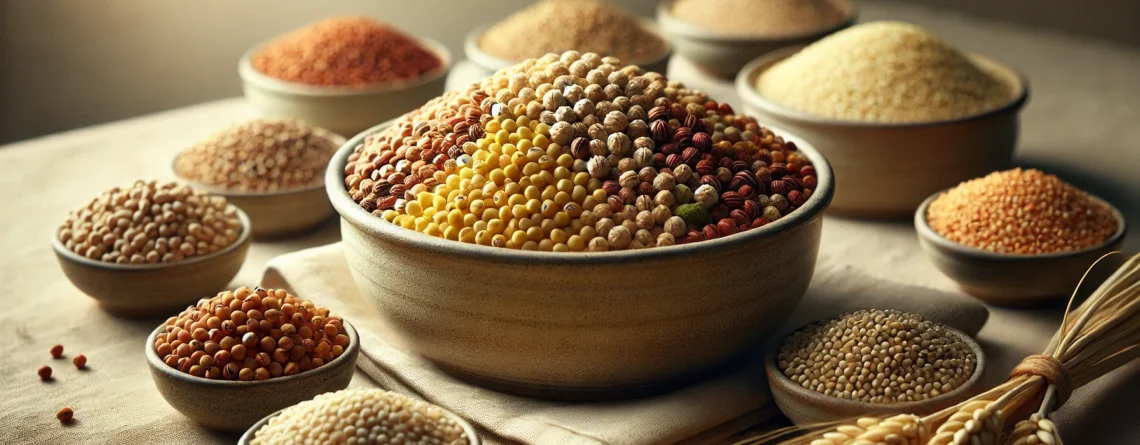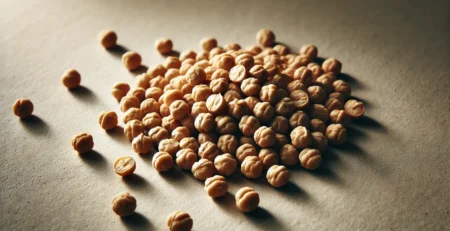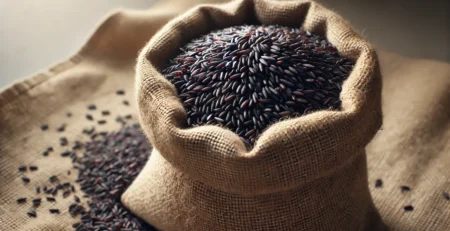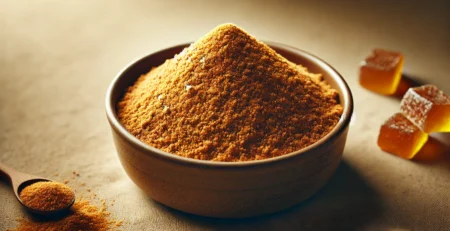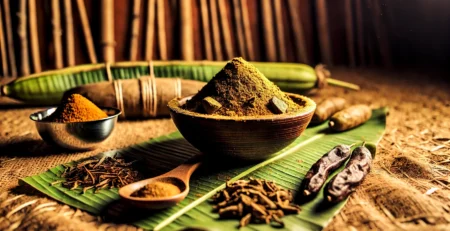Unpolished Millets Benefits: A Nutritional Powerhouse for a Healthy Lifestyle
Unpolished Millets Benefits: In recent years, the spotlight has turned back to ancient grains and traditional foods as people seek healthier, more sustainable alternatives to modern, processed foods. Among these ancient grains, unpolished millets have gained popularity due to their exceptional nutritional value and numerous health benefits. Unlike polished millets, which undergo processing that strips away much of their nutritional content, unpolished millets retain their natural nutrients, making them a superior choice for those looking to improve their diet and overall health.
This comprehensive guide explores the benefits of unpolished millets, their nutritional profile, and how they can be incorporated into your daily diet to promote better health and well-being.
Table of Contents
- Introduction to Unpolished Millets
- What are Unpolished Millets?
- Types of Unpolished Millets
- Nutritional Profile of Unpolished Millets
- Macronutrients
- Vitamins and Minerals
- Fiber Content
- Health Benefits of Unpolished Millets
- Supports Digestive Health
- Aids in Weight Management
- Regulates Blood Sugar Levels
- Enhances Heart Health
- Boosts Immune Function
- Promotes Bone Health
- Benefits for Skin and Hair
- Unpolished Millets vs. Polished Millets
- Nutritional Differences
- Health Impact
- Environmental Considerations
- How to Incorporate Unpolished Millets into Your Diet
- Breakfast Ideas
- Lunch and Dinner Recipes
- Snacks and Desserts
- Unpolished Millets in Traditional and Modern Diets
- Cultural Significance
- Contemporary Culinary Uses
- Buying and Storing Unpolished Millets
- Where to Buy
- Tips for Storing Unpolished Millets
- Frequently Asked Questions (FAQs)
- Are unpolished millets gluten-free?
- Can unpolished millets be used in baking?
- How do unpolished millets compare to quinoa?
- What are the best ways to cook unpolished millets?
- Are there any side effects of consuming unpolished millets?
- Conclusion
1. Introduction to Unpolished Millets
What are Unpolished Millets?
Unpolished millets are a group of small-seeded grains that have been cultivated for thousands of years in various parts of the world, particularly in Asia and Africa. These grains are known for their hardiness, requiring minimal water and being able to grow in less fertile soils, making them a sustainable crop for farmers in arid regions. Unlike their polished counterparts, unpolished millets retain their outer husk and bran, which are rich in fiber, vitamins, and minerals.
Types of Unpolished Millets
There are several types of unpolished millets, each with its own unique nutritional profile and health benefits. Some of the most popular unpolished millets include:
- Pearl Millet (Bajra): High in protein, fiber, and essential minerals like magnesium and iron.
- Finger Millet (Ragi): Rich in calcium, making it excellent for bone health.
- Foxtail Millet (Kangni): Known for its high antioxidant content.
- Barnyard Millet (Sanwa): Low in calories and a good source of fiber.
- Kodo Millet (Kodra): Helps in managing blood sugar levels due to its low glycemic index.
- Little Millet (Kutki): High in iron and fiber, supporting overall health.
Each of these unpolished millets offers distinct health benefits, making them a versatile addition to any diet.
2. Nutritional Profile of Unpolished Millets
Unpolished millets are nutrient-dense grains, packed with essential vitamins, minerals, and macronutrients that contribute to overall health.
Macronutrients
Unpolished millets are an excellent source of complex carbohydrates, which provide a steady release of energy throughout the day. Unlike refined grains, which are stripped of their natural nutrients, unpolished millets retain their original carbohydrate content along with a good amount of protein. The protein found in millets is plant-based, making it an ideal source of nutrition for vegetarians and vegans.
Vitamins and Minerals
Unpolished millets are rich in several essential vitamins and minerals, including:
- Iron: Crucial for the production of hemoglobin and preventing anemia.
- Magnesium: Supports muscle and nerve function, as well as bone health.
- Phosphorus: Important for healthy bones and teeth, as well as energy production.
- B Vitamins: Essential for energy metabolism, brain health, and red blood cell formation.
- Calcium: Particularly high in finger millet, contributing to strong bones and teeth.
- Zinc: Plays a role in immune function and wound healing.
Fiber Content
One of the standout features of unpolished millets is their high fiber content. Fiber is essential for maintaining healthy digestion, regulating blood sugar levels, and promoting satiety, which can aid in weight management. The fiber in unpolished millets also helps to lower cholesterol levels, reducing the risk of heart disease.
3. Health Benefits of Unpolished Millets
3.1 Supports Digestive Health
The high fiber content in unpolished millets makes them an excellent choice for promoting digestive health. Fiber adds bulk to the stool, making it easier to pass and reducing the risk of constipation. It also supports the growth of healthy gut bacteria, which are essential for overall digestive function and immunity.
3.2 Aids in Weight Management
Unpolished millets are low in calories and high in fiber, making them an ideal food for those looking to manage their weight. The fiber in these grains helps to keep you feeling full for longer periods, reducing overall calorie intake and preventing overeating. Additionally, the complex carbohydrates in unpolished millets provide a slow release of energy, preventing the spikes and crashes associated with refined grains.
3.3 Regulates Blood Sugar Levels
One of the most significant health benefits of unpolished millets is their ability to regulate blood sugar levels. These grains have a low glycemic index, meaning they release glucose into the bloodstream slowly, preventing sudden spikes in blood sugar levels. This makes unpolished millets an excellent choice for individuals with diabetes or those at risk of developing the condition.
3.4 Enhances Heart Health
Unpolished millets are rich in magnesium, which is known to support heart health by regulating blood pressure and reducing the risk of heart disease. The fiber in these grains also helps to lower LDL (bad) cholesterol levels, further protecting the heart. Additionally, the antioxidants found in unpolished millets, particularly in foxtail and pearl millet, help to reduce inflammation and prevent oxidative stress, both of which are linked to heart disease.
3.5 Boosts Immune Function
The vitamins and minerals found in unpolished millets, such as zinc, iron, and B vitamins, play a crucial role in supporting immune function. Zinc is essential for the proper functioning of immune cells, while iron is necessary for the production of hemoglobin, which carries oxygen to the cells. A diet rich in unpolished millets can help to strengthen the immune system and reduce the risk of infections.
3.6 Promotes Bone Health
Unpolished millets, particularly finger millet, are rich in calcium and magnesium, both of which are essential for maintaining strong bones and preventing osteoporosis. Regular consumption of unpolished millets can help to improve bone density and reduce the risk of bone-related conditions, especially in older adults.
3.7 Benefits for Skin and Hair
The nutrients found in unpolished millets, such as B vitamins, zinc, and antioxidants, also contribute to healthy skin and hair. B vitamins help to maintain skin elasticity and prevent premature aging, while zinc supports wound healing and reduces inflammation. The antioxidants in unpolished millets protect the skin from damage caused by free radicals and UV rays, promoting a youthful complexion.
4. Unpolished Millets vs. Polished Millets
4.1 Nutritional Differences
The primary difference between unpolished and polished millets lies in their nutritional content. Polished millets undergo a process that removes the outer bran and germ, stripping away much of the fiber, vitamins, and minerals. In contrast, unpolished millets retain these components, making them a more nutrient-dense option.
4.2 Health Impact
Because polished millets are stripped of their natural nutrients, they are less beneficial for health compared to unpolished millets. The lower fiber content in polished millets means they have a higher glycemic index, leading to faster spikes in blood sugar levels. Additionally, the lack of essential vitamins and minerals in polished millets reduces their ability to support overall health, making unpolished millets the superior choice.
4.3 Environmental Considerations
Unpolished millets are not only better for your health but also for the environment. The cultivation of millets is more sustainable than that of many other grains, as they require less water and can grow in less fertile soils. By choosing unpolished millets, you are supporting environmentally friendly farming practices and contributing to a more sustainable food system.
5. How to Incorporate Unpolished Millets into Your Diet
5.1 Breakfast Ideas
Unpolished millets are a nutritious and versatile ingredient that can be easily incorporated into your breakfast routine. Here are some ideas to help you start your day with the benefits of unpolished millets:
- Millet Porridge: Cook unpolished millets with water or milk to create a creamy porridge. Top it with fruits, nuts, and a drizzle of honey for a wholesome breakfast.
- Millet Pancakes: Mix unpolished millet flour with eggs, milk, and a pinch of baking powder to make fluffy, protein-rich pancakes. Add in some blueberries or banana slices for extra flavor and nutrition.
- Millet Smoothie Bowl: Blend cooked unpolished millets with your favorite fruits and yogurt to create a thick, satisfying smoothie bowl. Top with granola, seeds, and a sprinkle of cinnamon.
5.2 Lunch and Dinner Recipes
Unpolished millets can be used as a base for various savory dishes, providing a nutritious alternative to rice or pasta:
- Millet Salad: Toss cooked unpolished millets with fresh vegetables, herbs, and a light vinaigrette for a refreshing salad. Add in some grilled chicken or tofu for a complete meal.
- Millet Pilaf: Cook unpolished millets with broth, onions, garlic, and spices to create a flavorful pilaf. Serve it alongside roasted vegetables or grilled meats.
- Millet Soup: Add unpolished millets to soups and stews for added texture and nutrition. They absorb flavors well and make the dish more filling.
5.3 Snacks and Desserts
Unpolished millets can also be used in snacks and desserts:
- Millet Energy Bars: Mix cooked unpolished millets with nuts, seeds, dried fruits, and a binding agent like honey or peanut butter. Press the mixture into a pan and refrigerate until firm, then cut into bars.
- Millet Ladoos: Combine roasted unpolished millet flour with ghee, jaggery, and cardamom to make traditional Indian sweet balls (laddus).
- Millet Cookies: Use unpolished millet flour as a base for cookies. Add chocolate chips, dried fruits, or nuts for added flavor.
6. Unpolished Millets in Traditional and Modern Diets
6.1 Cultural Significance
Unpolished millets have been a staple in various cultures for centuries, particularly in Asia and Africa. In India, they are often used in traditional dishes and religious offerings. In Africa, millets are used to make porridge, bread, and beverages. These grains have been valued not only for their nutritional benefits but also for their ability to grow in harsh conditions, making them a reliable food source.
6.2 Contemporary Culinary Uses
With the growing awareness of health and sustainability, unpolished millets are making a comeback in modern diets. They are being incorporated into a wide range of contemporary recipes, from salads and grain bowls to baked goods and snacks. The versatility of unpolished millets makes them an excellent substitute for other grains, providing a nutrient-rich alternative that fits into various dietary preferences.
7. Buying and Storing Unpolished Millets
7.1 Where to Buy
Unpolished millets are available at most health food stores, organic markets, and online retailers. When purchasing unpolished millets, look for products labeled “whole grain” or “unpolished” to ensure that you are getting the most nutritious form of the grain.
7.2 Tips for Storing Unpolished Millets
To maintain the freshness and nutritional value of unpolished millets, store them in an airtight container in a cool, dry place. If you live in a humid environment, it’s best to store them in the refrigerator to prevent them from becoming rancid. Properly stored, unpolished millets can last for several months.
8. Frequently Asked Questions (FAQs)
8.1 Are Unpolished Millets Gluten-Free?
Yes, unpolished millets are naturally gluten-free, making them a great option for individuals with celiac disease or gluten sensitivity. They can be used as a substitute for gluten-containing grains like wheat, barley, and rye.
8.2 Can Unpolished Millets Be Used in Baking?
Absolutely! Unpolished millet flour can be used in baking to create a variety of gluten-free goods, including bread, cookies, and cakes. It can be used on its own or mixed with other flours to achieve the desired texture and flavor.
8.3 How Do Unpolished Millets Compare to Quinoa?
Unpolished millets and quinoa are both nutrient-dense grains that offer numerous health benefits. While quinoa is higher in protein, unpolished millets are richer in fiber and certain minerals. Both grains have a low glycemic index and are gluten-free, making them excellent choices for a healthy diet.
8.4 What Are the Best Ways to Cook Unpolished Millets?
Unpolished millets can be cooked similarly to rice or quinoa. Simply rinse the grains, add water or broth, and simmer until tender. They can be used in a variety of dishes, from breakfast porridge to salads and pilafs.
8.5 Are There Any Side Effects of Consuming Unpolished Millets?
Unpolished millets are generally safe for consumption and have no known serious side effects. However, due to their high fiber content, consuming large quantities may cause digestive discomfort in some individuals. It’s best to introduce millets into your diet gradually and drink plenty of water.
9. Conclusion
Unpolished millets are a nutritional powerhouse, offering a wide range of health benefits. From supporting digestive health and weight management to regulating blood sugar levels and promoting heart health, these ancient grains are a valuable addition to any diet. Unlike polished millets, unpolished millets retain their natural nutrients, making them a superior choice for those looking to improve their overall health and well-being.
Incorporating unpolished millets into your daily meals is simple and versatile. Whether you’re making a hearty breakfast, a nutritious lunch, or a delicious dessert, unpolished millets can enhance the flavor and nutritional value of your dishes. With their growing popularity and availability, there’s never been a better time to add these ancient grains to your pantry and enjoy the numerous unpolished millets benefits they have to offer.
By choosing unpolished millets, you are not only making a healthy choice for yourself but also supporting sustainable farming practices that benefit the environment. So, why not start today? Make unpolished millets a part of your diet and experience the many health benefits they bring to your life.


